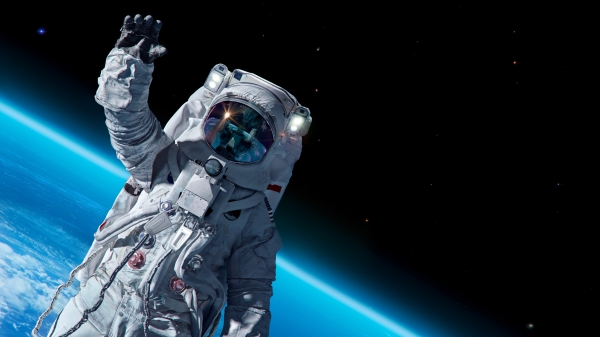First ASU team competing in national Bayer Alka-Rocket Challenge hopes for chance to win $30,000
Alka Seltzer tablets are not just for indigestion. Did you know that a “rocket” can be made using index cards, a plastic film canister with a lid, Alka Seltzer tablets and water?
Joshua Pardhe, a freshman engineering major in Barrett, The Honors College at Arizona State University, has known about this fun science experiment meant to demonstrate Newton’s third law of motion for a while. As a high school student, he made so-called Alka-rockets using this simple formula and enjoyed seeing how high the film canisters could fly with propulsion from just the interaction of water and effervescent tablets.
Now, Pardhe, along with two of his fellow honors students, are taking this fun experiment to new heights.
The team of Pardhe, freshman engineering major Jacob Abraham and a third student who declined to be named have built a rocket for the 2nd annual Bayer Alka-Rocket Challenge. In this competition, university students show off their chemistry, physics and engineering skills to design and launch an Alka-rocket for a chance to be the new Guinness World Record holder for the highest launch of an Alka-rocket.
This year, the challenge is open to teams of students that are attending any four-year accredited university in the U.S. Pardhe's group calls their team the Sun Devil Alka-Rocketeers. They are the first team from ASU to participate in the challenge.
Participants go through two rounds of competition that run concurrently. One round requires participants to submit a document explaining how they built their Alka-rocket, any challenges they faced and how they responded, and a video showing their rocket in action. A professional panel of judges, including Mae Jemison, the United States’ first female African-American astronaut, and Cliff Ransom, executive editor of Scientific American Custom Media, chooses four finalists, each one representing a census region of the United States.
The other round of competition involves a public voting period where a photo of each participating team is posted on Facebook and each “like” counts as a vote for that team. The team with the most likes on their photo becomes the fifth finalist. The votes will be counted on Nov. 2.
The five finalists will win a $5,000 prize and a trip to the Kennedy Space Center in Florida to compete with other teams to see whose rocket can fly highest. The team with the highest-flying rocket wins the Guinness World Record title and $30,000.
Pardhe said the genesis of the Alka-Rocketeers occurred when he was looking for an idea for an honors thesis project and stumbled upon the Alka-Rocket Challenge.
“I had done the rocket experiment with the Alka Seltzer tablets and film canisters just for fun, but the Alka-Rocket Challenge looked more interesting and challenging. I thought it could make a good honors thesis project,” Pardhe said.
He brought the idea to his Introduction to Engineering class and discussed it with his professor and honors faculty advisor, Ryan Meuth. After getting the go-ahead and encouragement from Meuth, Pardhe asked the other students to join him on the project.
They formed a student organization called the Sun Devil Alka-Rocketeers and set out to build a rocket for the competition. Their design includes a PVC pipe pressure chamber, a removable launch tube, and a 3D printed rocket with an altimeter inside.
In initial launches, the trio’s rocket has soared to 425 feet. Pardhe said the team will continue to innovate and modify the rocket’s design with the hope of getting it to fly higher. Last year's winning team from the University of Minnesota holds the current record of 430 feet.
More Science and technology

Brilliant move: Mathematician’s latest gambit is new chess AI
Benjamin Franklin wrote a book about chess. Napoleon spent his post-Waterloo years in exile playing the game on St. Helena. John…

ASU team studying radiation-resistant stem cells that could protect astronauts in space
It’s 2038.A group of NASA astronauts headed for Mars on a six-month scientific mission carry with them personalized stem cell…
Largest genetic chimpanzee study unveils how they’ve adapted to multiple habitats and disease
Chimpanzees are humans' closest living relatives, sharing about 98% of our DNA. Because of this, scientists can learn more about…